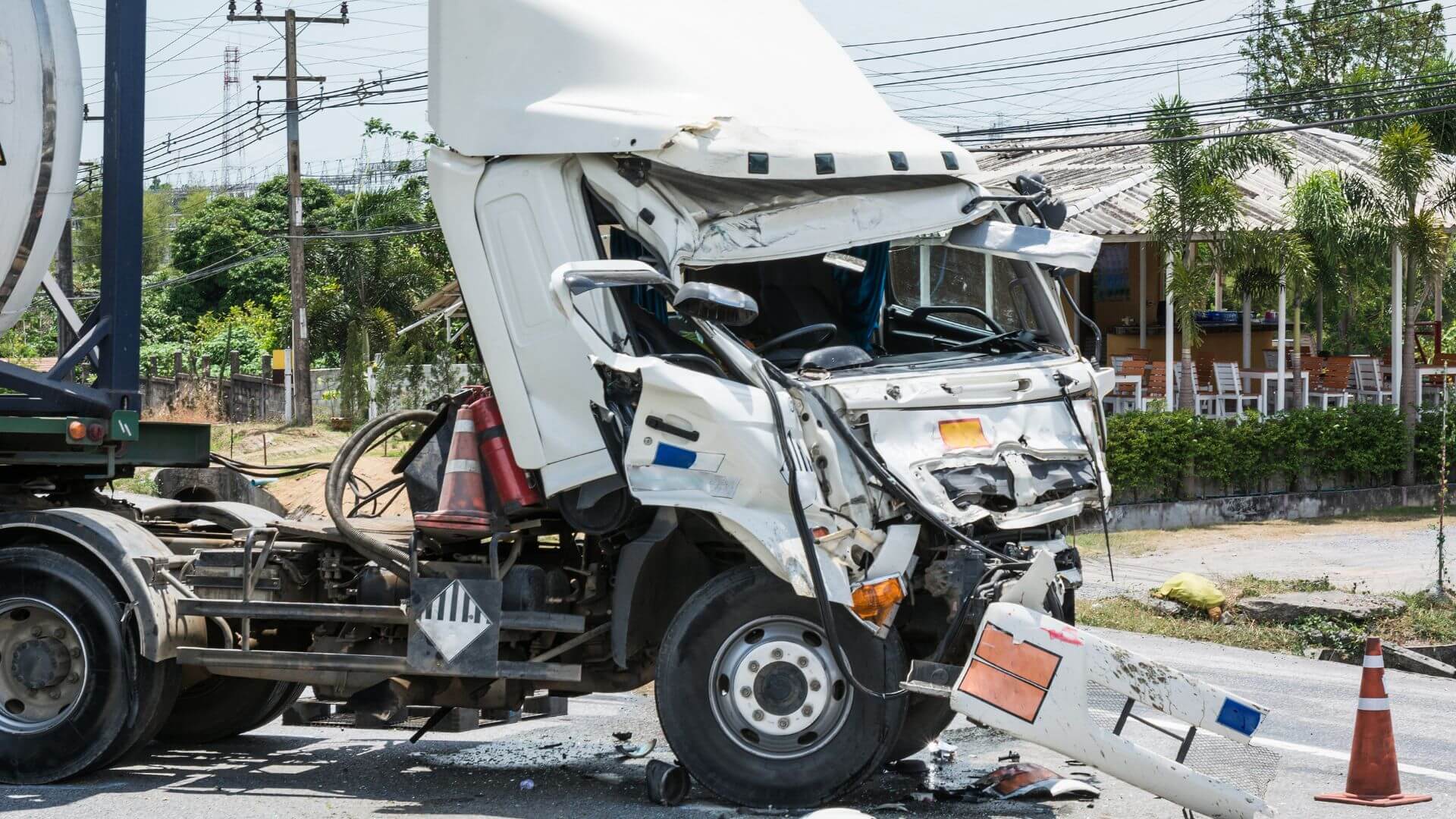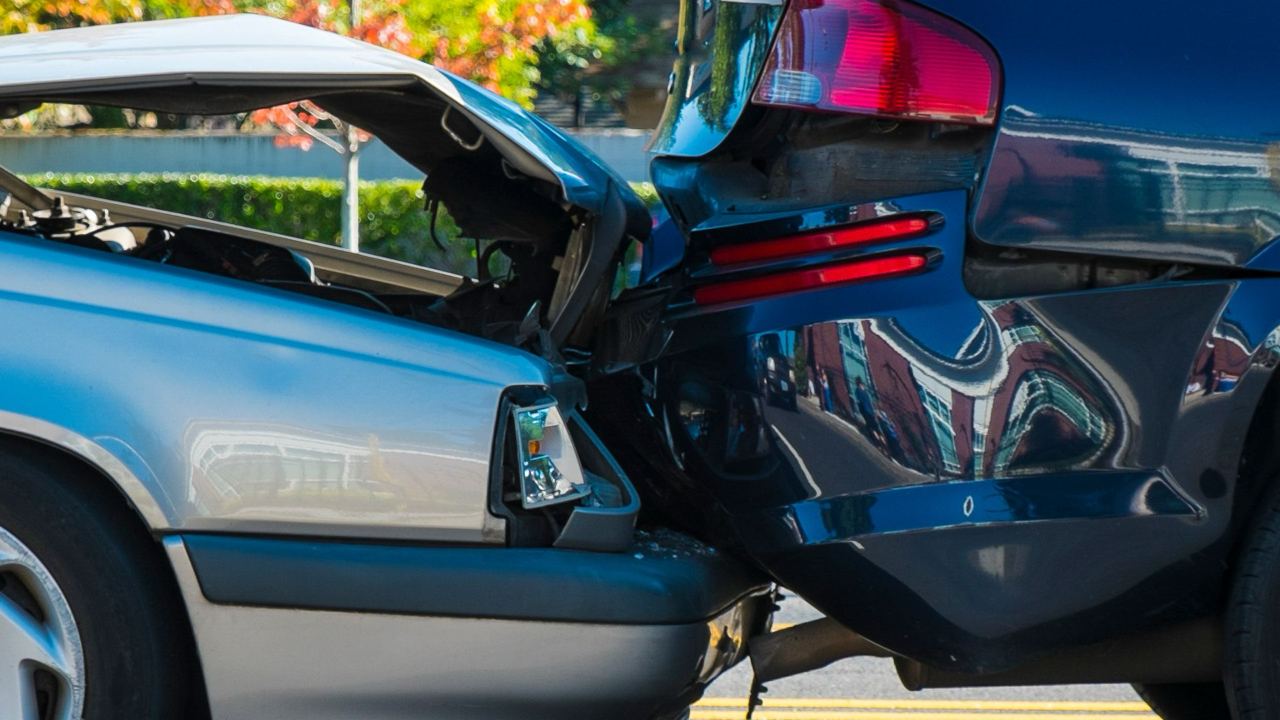Bitten But Blamed? How Insurance Companies Shift Fault in Dog Bite Claims
Every year, nearly 4.5 million Americans suffer dog bites, with about 800,000 requiring medical attention.
These incidents result in more than 10,000 hospitalizations annually and account for approximately one-third of all homeowners insurance liability claims, with insurers paying out over $850 million in settlements each year.
Yet these numbers only tell part of the story. Behind these painful incidents lies an often overlooked battle: the struggle between victims and insurance companies that systematically work to minimize payouts by shifting blame onto the injured parties.
Understanding dog bite liability in california
Strict liability law
In California, dog owners are held to a strict liability standard for injuries caused by their pets. This means owners are typically responsible for dog bite injuries regardless of the dog's previous behavior or the owner's knowledge of any dangerous tendencies. The legal framework is established by California's Civil Code §3342, which creates strong protections for victims and places the burden of responsibility squarely on the dog owner. This stringent standard makes it difficult for insurance companies to successfully use "victim-blaming" defenses, as demonstrated in several recent cases where such attempts were ultimately unsuccessful.
Key elements of California's strict liability law:
- Dog owners are liable for injuries their dogs cause, even if the dog had never previously shown aggression
- The victim does not need to prove the owner was negligent or knew the dog was dangerous
- Limited exceptions exist, but the burden of proof falls on the dog owner/insurer to establish defenses like provocation
- Provocation defenses are particularly weak against child victims, as demonstrated in case examples
- Victims who were lawfully present in a public place or private property (with permission) are strongly protected under the law
Common exceptions and loopholes
Insurance companies frequently attempt to avoid payouts by using specific exceptions to shift blame to victims. The main exceptions insurers try to use include:
- Provocation Defense - Insurers often claim the victim somehow triggered or provoked the dog's aggression, as seen in both the sidewalk attack case and the child mauling case. California law places the burden on the dog owner/insurer to prove provocation occurred.
- Trespassing Argument - Insurers may allege victims were unlawfully present on private property when attacked, attempting to void liability. This defense typically fails when victims are in public spaces or invited onto the property.
- Victim Negligence Claims - Insurance companies sometimes suggest the victim's own carelessness contributed to the incident, as attempted in the jogger case when investigators implied the victim was somehow at fault.
- Ownership Denial - In some cases insurers may even dispute their client's ownership of the dog or responsibility for its care to avoid coverage.
Despite these tactics, California courts consistently uphold strict liability principles, particularly for victims who were lawfully present and did not clearly provoke the animal, resulting in settlements or verdicts favoring victims.
Why insurance companies attempt to shift blame
Financial motivation
Insurance companies have strong financial incentives to minimize payouts in dog bite cases, which directly impacts their bottom line. The rising cost of these claims has made them increasingly focus on strategies to reduce liability and protect profits. Here's why insurers are motivated to shift blame to victims:
| Significant Financial Burden | Profit-Driven Business Model | Risk Management Strategy | Claim Volume Concerns |
|---|---|---|---|
| Dog bite claims represent a substantial expense for insurers, with the average cost per claim reaching $64,555 in 2022—a dramatic increase from previous years. | Insurance companies generate revenue by collecting premiums and investing those funds, making payout reduction a direct path to increased profitability. | By successfully arguing victim provocation, trespassing, or assumption of risk, insurers can significantly reduce or eliminate payouts, preserving their financial reserves. | The frequency of dog bite claims creates pressure to contest cases where possible, as even small reductions in liability across numerous claims can translate to substantial savings. |
These financial motivations directly shape how insurance companies approach dog bite claims, leading them to scrutinize victim behavior and actively seek ways to minimize their financial responsibility when possible.
Common tactics
Insurance companies employ several strategic approaches to reduce or avoid liability payments in dog bite cases, shifting responsibility to the victim whenever possible. These deflection tactics are designed to protect their financial interests by creating doubt about liability or reducing settlement amounts. The most common blame-shifting strategies include:
- Alleging victim provocation - Insurance companies frequently claim the victim somehow triggered or provoked the dog's aggression, as seen in multiple California cases where they argued children "provoked" dogs despite lack of evidence, or suggested pedestrians must have done something to cause normally calm dogs to attack.
- Asserting trespassing claims - Even when victims are lawfully present, insurers may contend they were trespassing or shouldn't have been on the property, attempting to void the owner's liability under exceptions in state statutes.
- Arguing assumption of risk - For individuals who regularly interact with dogs professionally (groomers, dog walkers, veterinary staff) or those making deliveries, insurers often suggest they knowingly accepted the inherent dangers of working with or near dogs.
- Minimizing injury severity - Insurers sometimes downplay the physical and psychological impact of injuries, suggesting the victim is exaggerating damages to secure a larger settlement, despite medical evidence of lasting trauma.
These tactics often fail in court when challenged with proper evidence, as California's strict liability laws strongly favor victims who were legally present and not clearly provoking the animal.
Real-life examples and case studies
Case 1
Sacramento Child Attack (2022): A 9-year-old girl named Arianna H. was mauled by a pit bull while visiting family friends. Despite receiving permission to see the dog, the animal lunged without warning, causing wounds near her carotid artery that required plastic surgery. The defense tried claiming the child provoked the attack by entering the dog's territory and even denied ownership of the dog. The jury rejected these arguments completely, awarding $297,000 in damages with no contributory fault assigned to the child.
Case 2
Southern California Sidewalk Attack (circa 2019): A man in his 30s was bitten on the knee by a neighbor's 90-pound pit bull while walking his own dog on a public sidewalk. The insurance company attempted to deny liability by claiming the pedestrian "provoked the dog" despite no evidence supporting this allegation. The insurer eventually settled for $102,500 when faced with strong evidence that the attack was unprovoked, demonstrating how victim-blaming defenses often collapse under scrutiny.
Case 3
Jogger Mauling Incident (2020s): A female jogger in a residential area was attacked by two dogs that escaped their property, causing severe wounds and PTSD. The insurance carrier initially denied the claim outright, suggesting she had provoked the dogs and downplaying her injuries despite medical evidence of nerve damage. When the victim's legal team filed a lawsuit, the insurer settled for approximately $250,000 rather than face a trial under California's strict liability statutes.
How insurance companies build their defense
Immediate steps after a bite
When you've been bitten by a dog, taking immediate strategic action can protect both your health and your legal rights. Following a systematic approach during this stressful time ensures you receive proper care while also establishing the documentation needed for any potential claims. Based on expert recommendations, here are the crucial immediate steps every dog bite victim should take:
- Identify the dog and owner - Immediately collect the owner's name, address, and contact information, along with proof of rabies vaccination to avoid potentially unnecessary and expensive rabies treatment (which can cost $1,200-$6,500).
- Seek prompt medical attention - Contact emergency services or go to an emergency room/urgent care depending on severity, as dog bite infections are a serious risk that should never be ignored, even for seemingly minor wounds.
- Document everything - Take clear photographs of all injuries (including bruises), torn clothing, and the location of the attack, even if it means temporarily removing bandages with medical guidance.
- File an official report - Contact local animal control or police to file a formal dog bite report, which creates a legal record of the incident and helps protect future potential victims through appropriate enforcement.
- Start a daily journal - Begin documenting your experience, pain levels, and recovery process as soon as possible after the attack, as this contemporaneous record may prove invaluable if your case takes months or years to resolve.
Properly following these steps not only ensures your immediate safety but establishes the foundation for any potential compensation claims while helping protect others from similar incidents with the same animal.
Legal guidance
Consulting an experienced dog bite attorney immediately after an incident provides essential protection for victims navigating the complex aftermath of an animal attack. Dog bite cases involve specialized legal considerations that can significantly impact recovery and compensation outcomes. An attorney with expertise in this specific area can evaluate your situation under relevant state laws (such as California's strict liability statutes), identify all potentially liable parties beyond just the dog's owner, and construct a compelling case that accounts for both immediate and long-term damages.
Most importantly, legal counsel creates a protective buffer between you and insurance companies who typically employ tactics to minimize claims, including attempts to shift blame to the victim or secure quick, inadequate settlements before the full extent of injuries becomes apparent. With professional representation, victims gain both an advocate who understands the true value of their claim and a guide through the complicated procedural requirements of the legal system, ensuring proper documentation, adherence to filing deadlines, and strategic navigation of settlement negotiations or court proceedings if necessary.
What to do if blamed unfairly
If you find yourself wrongfully blamed in a dog-related incident, taking immediate strategic action can protect your legal position and reputation. When facing unwarranted accusations about your dog's behavior or your handling of a situation, a methodical response is essential to establish the facts and defend your position effectively:
- Document everything immediately - Take detailed photographs of the scene, your dog's condition, and any relevant environmental factors that might have influenced the incident, creating a visual record before evidence disappears.
- Gather independent witness statements - Quickly identify and collect contact information from any objective bystanders who observed the interaction, as their unbiased accounts can prove invaluable in countering false narratives.
- File your own official report - Contact animal control promptly to file your version of events, ensuring authorities have your perspective documented from the outset rather than only hearing the other party's claims.
- Preserve physical evidence - Retain items like leashes, collars, or damaged property that might demonstrate how the incident actually occurred or contradict accusations about your dog's behavior or restraint.
- Consult a specialized attorney - Speak with a lawyer experienced in dog bite cases who understands California's strict liability laws and can advise on how to protect yourself from unfair blame while navigating potential insurance claims or legal proceedings.
Taking these proactive steps immediately after the incident creates an evidence-based foundation for your defense and helps prevent unwarranted assumptions from hardening into accepted facts that could unfairly impact you and your dog.
Navigating settlement vs. litigation
When pursuing compensation after a dog bite incident, victims face a critical decision between accepting an insurance settlement or pursuing litigation. Settlements offer faster resolution and guaranteed compensation but initial offers are typically low, designed to minimize payouts rather than address long-term needs.
Litigation becomes necessary when insurers employ blame-shifting tactics, when settlements don't cover extensive medical treatments or permanent disfigurement, or when injuries worsen over time. While court proceedings take longer and involve more uncertainty, they may be the only path to full compensation for serious injuries, particularly when insurance companies refuse reasonable negotiations or when policy limits are insufficient. An experienced attorney can determine which approach best serves your specific circumstances.

How Personal Injury Cases Protect the Community
When most people think of personal injury cases, they picture an individual seeking compensation for medical bills, lost wages, or pain and suffering. read more

What Happens If You're Partially At Fault in an Accident
After an accident, one of the first worries people often have is: “What if I was partly to blame? Does that mean I can’t recover anything?” read more

Think Before You Post: How Social Media Can Hurt Your Accident Claim
Sharing accident updates on social media may feel harmless—but insurance companies and defense attorneys can use your posts against you. Learn why posting after an accident is risky and how to protect your personal injury claim. read more

Why Shiganian Law is the Top Personal Injury Firm in Sherman Oaks and Encino
Shiganian Law delivers expert personal injury representation with a proven track record. Led by Isabel Shiganian, we offer personalized service, direct communication, and results-driven advocacy. No fee unless we win. read more

Hidden Injuries That Can Arise After a Car Accident — and What to Do Next
Learn about hidden injuries that can arise after a car accident. Comprehensive guide covering injury types, injury settlements, and steps to take after an accident. read more

How Dashcam Footage Can Completely Change Your Car Accident Claim
Discover how dashcam footage can transform car accident claims by providing clear evidence, resolving disputes, preventing fraud, and expediting insurance settlements. read more

What Is Considered a Catastrophic Injury in Personal Injury Law?
Understand catastrophic injuries in personal injury law - definitions, impacts, causes, and why specialized legal help is crucial for securing proper compensation. read more

The Biggest Mistakes People Make After an Accident Causing Personal Injury
Discover the critical mistakes people make after injuries that can damage their compensation claims and learn how to avoid these costly errors. read more

Financial Struggles After Accidents: Recovery & Legal Options
Explore the financial impact of injuries, from medical debt to lost wages. Learn legal options, coping strategies, and support for recovery stability. read more

Emotional Trauma After an Accident: Understanding Your Rights and Recovery
Discover how emotional trauma after accidents affects mental health and daily life. Learn about your legal rights and the recovery journey to healing and compensation. read more

Motorcycle Accidents: Types of Injuries, Settlements, and Your Rights
Learn about motorcycle accident causes, safety tips, and legal rights. Comprehensive guide covering injury types, injury settlements, and steps to take after an accident. read more

Product Liability in California: Protecting Consumer Rights
Learn about California product liability law, including types of defects, liable parties, and compensation available for injuries caused by defective products. read more

What Does a California Truck Accident Lawyer Do?
Learn how an experienced California truck accident lawyer can help maximize your compensation through expert investigation, evidence preservation, and strategic negotiation. read more

What is Premises Liability Law: Responsibility, Examples, and Common Types
Imagine walking through a quiet shopping center, enjoying a peaceful afternoon, when suddenly a wild Canadian goose darts out, knocking you over and fracturing your hip. It may sound far-fetched... read more

What to Do if You’ve Been in a California Car Accident?
If you’ve been in a car accident, you might be overwhelmed with the experience and what to do next. Your priority is your safety and health, and if you have been injured, getting the support you need to recover. read more

How long does it take to settle a pedestrian accident in California
When estimating the duration of a pedestrian accident settlement, it's important to consider all the factors that can influence the process. read more

California Prop 213 and Its Impact on Car Accidents
Proposition 213 was created in 1996, as a way to encourage motorists to get and maintain insurance. read more

How Much to Expect from a Car Accident Settlement in California
Car accidents are unfortunate events that can result in significant physical injuries and extensive medical treatment. read more

What to Do After a Slip-and-Fall Accident
This guide, while not a substitute for legal or medical advice, can help you figure out what to do in the short- and long-term after you’ve had an accident. read more